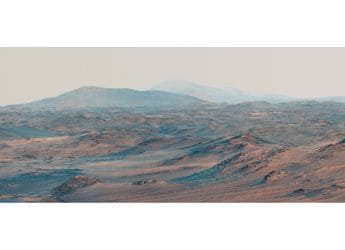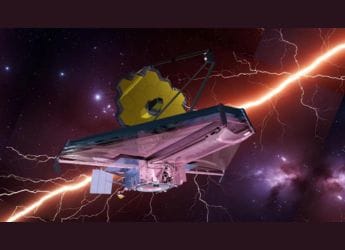- Home
- Science
- Science News
- Moon’s Deepest Canyons Formed in Minutes by High Speed Impact Debris
Moon’s Deepest Canyons Formed in Minutes by High-Speed Impact Debris
Two massive lunar canyons, deeper than the Grand Canyon, were created in minutes by high-speed rock debris.

Photo Credit: NASA
Two massive lunar canyons, deeper than the Grand Canyon, formed in minutes from fast-moving rock debris
Two colossal canyons on the moon, both deeper than the Grand Canyon, were formed in under ten minutes by surges of high-speed rock debris, as per reports. These valleys, named Vallis Schrödinger and Vallis Planck, extend for 270 kilometres and 280 kilometres, respectively, with depths of up to 3.5 kilometres. Comparatively, the Grand Canyon reaches a maximum depth of approximately 1.9 kilometres. The canyons are located near the Schrödinger impact basin in the lunar south polar region, an area marked by towering mountains and deep craters.
Impact that shaped the lunar landscape
According to the study published in Nature Communications, these canyons are part of several valleys that formed from the debris ejected during the impact that created Schrödinger basin, a 320-kilometre-wide crater formed around 3.81 billion years ago. The basin is positioned on the outer edge of the South Pole–Aitken basin, the moon's largest and oldest remaining impact structure, which dates back more than 4.2 billion years.
Unprecedented energy levels behind the canyons
As per findings, rocky debris from the impact travelled at speeds ranging between 3,420 and 4,600 kilometres per hour. In comparison, a bullet from a 9mm handgun reaches speeds of about 2,200 kilometres per hour. The force required to carve these canyons is estimated to have been over 130 times greater than the total energy stored in the current global nuclear arsenal.
Key insights for future lunar exploration
Speaking to Space.com, David Kring, a geologist at the Lunar and Planetary Institute, highlighted that unlike the Grand Canyon, which was shaped by water over millions of years, these lunar canyons were formed in a matter of minutes by rock flows. The distribution of impact debris also suggests that astronauts landing near the South Pole–Aitken basin may find better access to some of the moon's oldest geological samples. These insights contribute to ongoing research on potential landing sites for future lunar missions.
Get your daily dose of tech news, reviews, and insights, in under 80 characters on Gadgets 360 Turbo. Connect with fellow tech lovers on our Forum. Follow us on X, Facebook, WhatsApp, Threads and Google News for instant updates. Catch all the action on our YouTube channel.
Related Stories
- Samsung Galaxy Unpacked 2025
- ChatGPT
- Redmi Note 14 Pro+
- iPhone 16
- Apple Vision Pro
- Oneplus 12
- OnePlus Nord CE 3 Lite 5G
- iPhone 13
- Xiaomi 14 Pro
- Oppo Find N3
- Tecno Spark Go (2023)
- Realme V30
- Best Phones Under 25000
- Samsung Galaxy S24 Series
- Cryptocurrency
- iQoo 12
- Samsung Galaxy S24 Ultra
- Giottus
- Samsung Galaxy Z Flip 5
- Apple 'Scary Fast'
- Housefull 5
- GoPro Hero 12 Black Review
- Invincible Season 2
- JioGlass
- HD Ready TV
- Laptop Under 50000
- Smartwatch Under 10000
- Latest Mobile Phones
- Compare Phones
- OnePlus 15R
- Realme Narzo 90x 5G
- Realme Narzo 90 5G
- Vivo S50 Pro Mini
- Vivo S50
- OPPO Reno 15c
- Redmi Note 15 5G
- Redmi Note 15 Pro 5G
- Asus ProArt P16
- MacBook Pro 14-inch (M5, 2025)
- Infinix Xpad Edge
- OnePlus Pad Go 2
- OnePlus Watch Lite
- Just Corseca Skywatch Pro
- Acerpure Nitro Z Series 100-inch QLED TV
- Samsung 43 Inch LED Ultra HD (4K) Smart TV (UA43UE81AFULXL)
- Asus ROG Ally
- Nintendo Switch Lite
- Haier 1.6 Ton 5 Star Inverter Split AC (HSU19G-MZAID5BN-INV)
- Haier 1.6 Ton 5 Star Inverter Split AC (HSU19G-MZAIM5BN-INV)

















